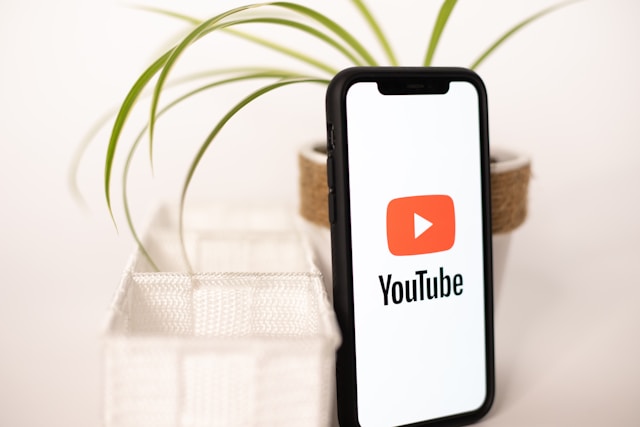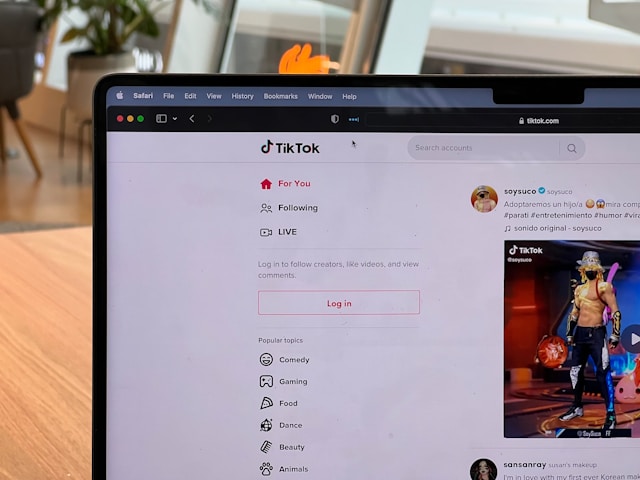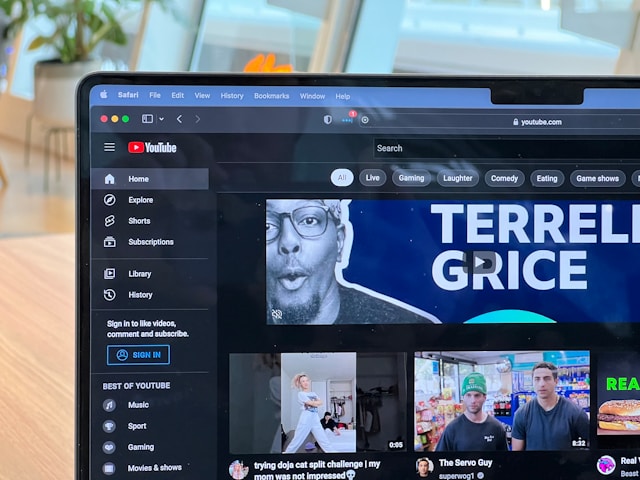TikTok vs YouTube: When To Choose One or the Other
Whether you’re a creator or viewer, how do you choose between TikTok vs YouTube? These remain the two most popular platforms for creating and sharing video content.
Each one offers unique features and a rewarding viewing experience. But is one better than the other?
Keep reading to find out!

Difference Between YouTube and TikTok
What’s the main difference between YouTube and TikTok? Both are video-sharing platforms, but if there’s one major difference between the two, it’s the length of videos they allow. On YouTube, you can upload videos ranging from 15 minutes to 12 hours long.
In comparison, TikTok video lengths only range from 15 seconds to ten minutes.
This difference also influences the types of creators, content, and audiences you’ll find on either platform.
Here’s what you can expect on YouTube vs TikTok:
- YouTube content often follows a longer and more detailed vlog format and may offer a mix of both professional and amateur videos. Because YouTube allows longer videos, you’ll find lots of how-to and discussion videos on the platform. TikTok offers bite-sized content perfect for on-the-go viewing. Most TikTok videos are raw and unpolished and, therefore, more authentic.
- YouTube offers greater diversity in terms of types of content because creators have more elbow room in terms of video length. You’ll find live streams, tutorials, behind-the-scenes, music videos, comedy, explainer videos, product demos and reviews, and other types of vlogs. All in all, YouTube specializes in long-form, deep-diving content. TikTok’s content staples are dance and lip-sync videos. The platform eventually offered a wider range of content types, including many of what you’ll find on YouTube, but in condensed form. Entertaining and trend-driven videos using TikTok’s innovative editing tools dominate the platform.
- YouTube has been around longer — two decades, to be exact — and caters to a broader audience demographic. TikTok is considered more hip and trendy, therefore, attracts a younger user base(but its appeal is spreading across all age groups).
- Interactions on YouTube are limited to the comments section and real-time exchanges during live streams. TikTok offers more interactive features, including Duet, Stitch, direct messaging, and more.

YouTube Shorts vs TikTok
The huge popularity of TikTok’s short-form video format forced other social platforms to launch their own versions of it. In September 2020, YouTube launched Shorts to compete with TikTok. Let’s have a closer look at YouTube Shorts vs TikTok.
How Are Shorts and TikTok the Same?
In order to compete with TikTok, YouTube Shorts mimics its tried-and-tested formulas. Here are their similarities:
- Viewers of both TikTok and Shorts can enjoy an immersive, full-screen experience.
- You’ll find the engagement menu/react buttons on the right-hand side of the screen for both platforms.
- The feed scrolls vertically and offers an endless stream of videos.
- Users can subscribe to YouTube channels or follow TikTok creators directly from feed videos.
- Both YouTube Shorts and TikTok allow creators to schedule posts in advance. However, TikTok’s scheduling tool is only available on desktop PC.
- Shorts and TikTok offer creators the option to limit a video’s audience to viewers aged 18 and older.

How Are Shorts and TikTok Different?
What makes YouTube Shorts different from TikTok? Let’s look at their key differences:
- YouTube Shorts only offers basic editing tools that allow users to adjust a video’s visual composition, such as tone, brightness, temperature, etc. TikTok’s editing features are more advanced and varied. They include AR effects, AI portrait filters, voice effects, transitions, and more.
- Shorts’ video privacy settings allow creators to restrict viewership to individual audiences via Private mode. TikTok’s Private mode for videos limits the audience to only the creator.
- Shorts’ viewers can only interact with videos via the like, dislike, and share buttons and comments. TikTok offers the same engagement buttons except for the dislike option. TikTokers can also interact with videos via Duet, Stitch, replying to comments, sending virtual gifts, etc.
- Creators can edit a Shorts video after publishing; TikTok only allows creators to edit the video description after posting.
- TikTok videos can be between 15 seconds to 10 minutes in length. YouTube Shorts can only be between 15 and 60 seconds.

YouTubers vs TikTokers: We’re Not Talking About the 2021 Boxing Match
In the TikTok versus YouTube match, we also have to take a look at YouTubers vs TikTokers. How do the creators on each platform stack up against each other?
YouTubers can earn directly from the platform via ad revenue, brand sponsorships, and premium channel memberships, among others. TikTok content monetization opportunities, on the other hand, take an indirect route.
For example, popular TikTokers who collect a lot of Gifts can earn Diamonds from TikTok; Diamonds are convertible to cash. They can also earn from LIVE subscriptions and brand collaborations.
Another key difference is how creators from each platform build their relevance and following. On YouTube, a creator needs expertise, a skillset, or talent to make a name for themselves and establish a solid presence. TikTokers often rely on trends and hype to go viral and grow their fan base.
YouTubers also typically start with broad targeting to gain popularity in their industry. On TikTok, a more focused niche targeting plays a bigger role in jumpstarting a successful career as a creator.
Most TikTok creators produce content using their phones and TikTok in-app features, thanks to the app’s innovative editing tools. YouTube’s longer format often requires a more professional setup, which includes specialized equipment.

TikTok vs YouTube Comparative Summary
Let’s sum up how TikTok and YouTube compare against each other in terms of several key and shared aspects:
- Primary type of content: Short-form, trend-driven, and user-generated content (UGC) powers TikTok. On YouTube, long-form and in-depth content and live streams rule.
- Main Audience Demographics: TikTok’s largest demographic belongs to the 18- to 24-year age group, followed by viewers in the 25- to 34-year range. The majority of YouTube viewers fall between 25 and 34 years old, followed by those between 35 and 44 years old.
- Average Daily Viewing Time: TikTok viewers spend an average of 58 minutes and 24 seconds on TikTok versus 47.5 minutes on YouTube. This report comes from the Influencer Marketing Hub.
- Content Recommendation and Discovery: TikTok’s robust algorithm powers its addictive For You feed, which recommends content primarily based on user interests. YouTube personalizes recommendations based on a user’s watch time, video engagement, and content optimization.
- Engagement Strategy: Viral challenges and interactive content (such as Duet and Stitch) and tools drive high engagement on TikTok. YouTubers rely on consistent, high-quality content and live streams to drive direct engagement through comments and community posts.
- Community Building Opportunities: TikTok creators and brands rely on trend-driven content to establish a high-engaging community. However, these communities are often short-lived unless the creator/brand consistently delivers relevant content. On YouTube, creators often build lasting subscriber relationships via a sustained and long-term content strategy.
- Content Monetization Opportunities: TikTok offers a wide array of content monetization features, but it doesn’t directly pay its creators. YouTubers often enjoy a higher earning potential through the Partner Program and AdSense.
- Best Performing Ad Formats: On TikTok, branded challenges and influencer collaborations bring in the highest ROI for brands and creators. Sponsored content and non-skippable video ads are the highest source of ad revenue on YouTube.

Which Platform Is Better for Your Goals?
UGC fuels the feeds on both platforms. Creator-led videos, both organic and sponsored, consistently generate the highest engagement. The video format also lends itself to more creative possibilities, which, in turn, offer better marketing opportunities.
How do you choose between TikTok and YouTube? Your first consideration should be which platform is more suitable for the type of content you create. TikTok is the ideal choice for short-form content and trendy content that’s best for on-the-go viewing. If you require longer and more in-depth videos, opt for YouTube.
In terms of audience targeting, TikTok wins not just over YouTube but over all other social media platforms. Its robust and highly effective recommendation algorithm always delivers — catering to both user interests and creators’ targeting preferences.
However, if your viewers prefer long-form content or live-streamed games, then you’ll have a better chance of reaching them on YouTube.
In the TikTok vs. YouTube contest, each platform offers unique features and opportunities that make one better than the other. You can always use both, of course. But if you’re just starting your video-creation journey on social media, use TikTok!
To help you supercharge your follower growth from the get-go, sign up for a High Social plan. High Social’s advanced, proprietary AI targeting technology perfectly complements TikTok’s algorithm. Ensure delivery of your content to the feeds of genuinely interested viewers each and every time you post.
Start growing your TikTok today!

Is YouTube Better Than TikTok? Frequently Asked Questions
Is YouTube better than TikTok, or is it the other way around? In a gist, YouTube is better than TikTok when it comes to long-form content. In the game of short-form content, TikTok trumps YouTube.
When should you use YouTube or TikTok? Let’s answer some frequently asked questions to help you decide!
TikTok is the better choice if:
1. If you’re a creator and want better chances of reaching your target audience because of its robust algorithm.
2. If you’re a viewer who enjoys short-form content and new recommendations that cater to your interests.
Use YouTube if:
1. You’re a creator/viewer who prefers long-form content and viewers.
2. If you’re a gamer or other type of creator who often does live streaming.
3. If you’re a viewer who enjoys instructional/how-to videos.
Currently, YouTube still has more active users worldwide, with 2.7 billion users vis-a-vis TikTok’s 1.67 billion.
Among all social platforms, YouTube ranks as the second most popular in terms of number of active users. Facebook still tops the list, and TikTok currently ranks at number six.
It’s highly likely that TikTok will soon overtake YouTube, given TikTok’s short but impressive track record. YouTube reached one billion active users in 2013, eight years after it’s launch in February 2005. TikTok reached the same milestone in 2021, only four years after it’s worldwide launch in 2017.
Again, the answer depends on the type of content a creator makes and their target audience. If you want to earn more from long-form content, you’ll probably earn more on YouTube.
If you’re looking to monetize short-form content, TikTok is your best bet.













